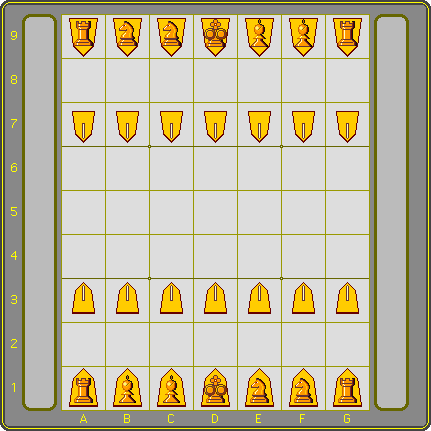 | The diagram shows the board and the initial position of the pieces. All pieces are of the same color. Sides are only distinguished by their direction. On the reverse side of each piece its promoted version is depicted.
|
 | General and forward Rook
|
 | Bishop and Knight
|
 | Promotion Any piece except the king may promote if it ends its (non-drop) move inside the promotion-zone. The promotion-zone consists of the 3 farthest ranks from the player's point of view. Promotion is optional unless not doing so would leave the piece immobile. Thus a bishop, knight or pawn must be promoted if moved to the ninth rank.
|
Drops
As in Shogi, captured pieces change sides, that is, a captured piece becomes the property of its captor. The piece is now 'in hand' and may be dropped conditionally onto a vacant square, at the cost of a turn. The conditions are:
- A piece must be dropped unpromoted.
- A drop may not render the piece immobile. Thus a bishop, knight or pawn may not be dropped on the back rank.
- A pawn may not be dropped on a file that already holds an unpromoted pawn of the same player. Thus 'double pawns', as known in Chess, are not possible in Yari Shogi.
- Pawns may like any piece drop mate. This is the only difference with Shogi pawns.
